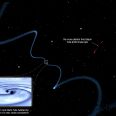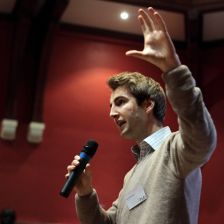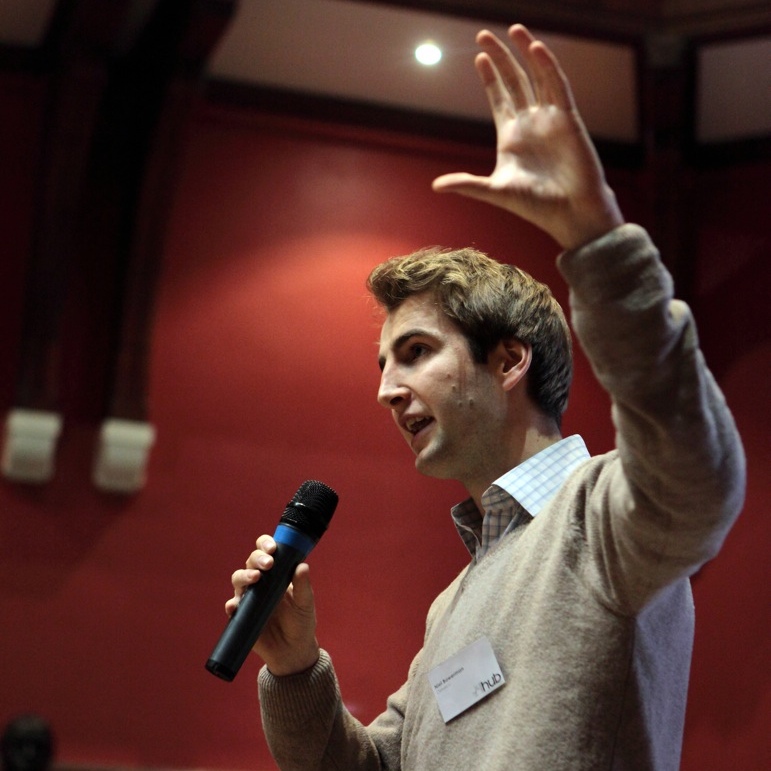Public Outreach
2 October 2014
Jena Meinecke: American Physical Society October Woman Physicist of the Month

Each month, the American Physical Society's Committee for the Status of Women in Physics recognizes a female physicist who is making an impact in the physics community. Jena Meinecke, a graduate student in Atomic and Laser Physics, is October's Woman Physicist. Full story at http://www.aps.org/programs/women/scholarships/womanmonth/2014.cfm
23 September 2014
ATLAS Supersymmetry workshop in Oxford
The Higgs boson is just the start. With the collision energy of the Large Hadron Collider (LHC) about to increase from 8 to 13 TeV, the search for other, as-yet-unobserved particles will soon be on.
This week, 140 physicists from around the world are meeting in St Catherine's College, Oxford, to plan their new-particle search strategies with the ATLAS experiment at the LHC.
Our Violent Solar System: Planetary Impacts and Meteors

Our Violent Solar System: Planetary Impacts and Meteors
Dr. Leigh Fletcher
Massive Black Holes and Galaxies

Prof. Reinhard Genzel
MPI for Extraterrestrial Physics, Garching
University of California, Berkeley
Leanne O'Donnell
01865 613 973
Leanne.odonnell@astro.ox.ac.uk
26 June 2014
Black hole trio holds promise for gravity wave hunt

The discovery of three closely orbiting supermassive black holes in a galaxy more than four billion light years away could help astronomers in the search for gravitational waves: the ‘ripples in spacetime’ predicted by Einstein.
Cancelled: National Women in Engineering Day (NWED) - Talk

This event has unfortuantly been cancelled.
Any questions please contact s.owen@physics.ox.ac.uk.
FLASH TALK PHYSICS June 2014

Graduate Student Competition
An evening of bite-sized physics presentations for the public

To book places at the event, please complete this short webform: https://www.surveymonkey.com/s/M6GM77P
2014 Halley Lecture
University of Oxford
Halley Lecture
"How the Universe Evolved From Smooth to Lumpy -- the Physics of Galaxy Formation"
Professor Eliot Quataert
University of California, Berkeley Astronomy Department
Tuesday, 10 June 2014 at 5pm
(to be seated by 4.50pm)
Martin Wood Lecture Theatre
Clarendon Laboratory
Parks Road, Oxford
THIS LECTURE IS OPEN TO THE PUBLIC
This lecture will be followed by a Drinks Reception in the foyer of the Martin Wood
Leanne O'Donnell
Tel: 01865 613 973
Email: Leanne.odonnell@astro.ox.ac.uk
Accelerators and subatomic particles

Come along to hear two short talks about particle physics. There will be plenty of time for questions and hands-on stalls set up in the foyer to explore the topics further after the talks (from 7pm).
Introduction to particle accelerators and detectors (20min)
Prof Tony Weidberg
To book places at the event please complete our booking form. Any questions please contact Dr Sian Owen.
Bringing the Solar System down to Earth: Generating planets and stars in the Lab

Bringing the Solar System down to Earth: Generating planets and stars in the Lab
The Solar system plays host to a remarkable range of conditions. From the icy depths of Uranus and Neptune to the burning heart of the Sun, scientists are working on understanding the inner workings of our astrophysical neighbours. But despite our best efforts, many mysteries remain. What are the planets made of? Why does Saturn look so much younger than it’s neighbours? How can we harness nuclear fusion, the power source of the Sun, for use here on Earth?


